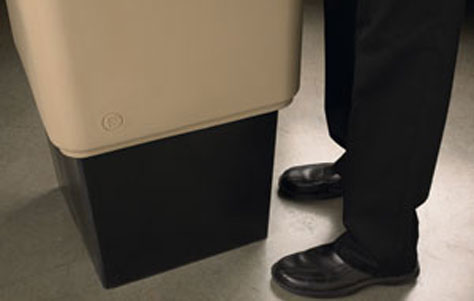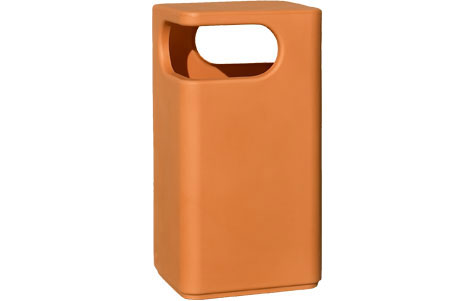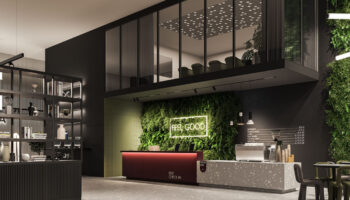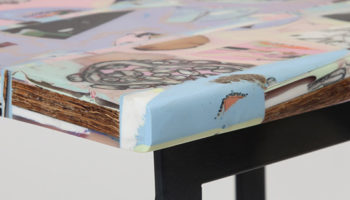The New Lift-Off Receptacle by Peter Pepper Products is Worth Your While
Anyone who has ever worked in a restaurant knows the shortcomings of the average plastic trashcan. Not only are they unsightly—favoring a sort of muddy industrial gray color—they’re also flimsy, ungainly (prone to falling over and spilling the unmentionable contents), and difficult to clean. In fact, about the only thing they have going for them is that they’re just about impossible to puncture. Peter Pepper’s Lift-Off receptacle, to the contrary, is strong, attractive, easy to maneuver, and even easier to polish to a spit-shiny glow.
Lift-Off receptacle. Designed and Manufactured by Peter Pepper Products.
The Lift-Off Receptacles Are User-Friendly

With regard to trash, the old idiom “out of sight, out of mind” is certainly apropos. And while this mind-set might be contributing to the problematic ascendance of the American landfill, it’s just the right recipe for keeping kitchens orderly and hygienic.

At 20″W x 40″H x 20″D with a 16″W x 6-1/2″H opening, Lift-Off is an impressively large receptacle that will easily dispense with all manner of refuse—whether in commercial or residential environments. “Designed with simplicity in mind,” the lightweight lift-off top facilitates rapid, problem-free access to the re-usable Polyethylene liner.

Other perks of this environmental age trash can include 100% recyclable roto-molded polyethylene construction; UV, moisture, and corrosion resistance; and diagonally-oriented side openings for improved access. Available colors include Cinder, Taupe, Olive, and Terracotta.
About the Manufacturer: With the powerful panache of their extraordinarily catch name, Peter Pepper purveys a panoply of products for home, office, and healthcare. The company’s impressively large product line includes everything from home accessories to clocks, media cabinets to lecterns, fiberglass planters to folding chairs—all in service of the company objective: “identifying real solutions and meeting the price specifications of your most complex problems, yet never compromising the integrity of the design.”




Leave a Reply